Big Data technological tools and spatial data play a very important role in business by measuring footfall and helping to understand consumer behavior patterns in any given area of interest or point of sale.
Footfall analytics, location intelligence, and point-of-interest categorization have revolutionized the way the retail and wholesale industries implement the expansion, commercial and operational strategies in the franchised warehouse clubs.
With these analytics, businesses get a more detailed picture of their store performance, while predicting or estimating brand positioning, customer behavior, market trends, turnover, and expansion models (site selection), both their own and those of their competitors.
By applying footfall analytics through spatial data mining, it becomes possible to collect valuable information such as the number and the classification of people who visits an establishment or area of interest, the hours and times of the day where there is the most foot traffic, the dwell time inside the stores, the number of visits and the market potential of points of sale or other points of interest (POI) that leaders use to make more efficient and concise decisions that generate greater profitability by maximizing revenues and optimizing costs.
The correlation between foot traffic, visitation, sales, and the success of warehouse clubs has been studied and proven, so the development of this type of analysis has become a priority in the site selection process and in modeling the expansion of retail and wholesale chains.
Study Case: Costco Wholesale Vs. Sam’s Club, Mexico City, México
At PREDIK Data-Driven we conducted a detailed study of two warehouse clubs in Mexico City, Mexico, Costco Wholesale and Sam’s Club.
In this case study, we analyze the footfall inside and outside the clubs, with the objective of understanding the behavioral patterns of consumers visiting both brands. This analysis aims to answer the following questions:
How are visits distributed in each warehouse?
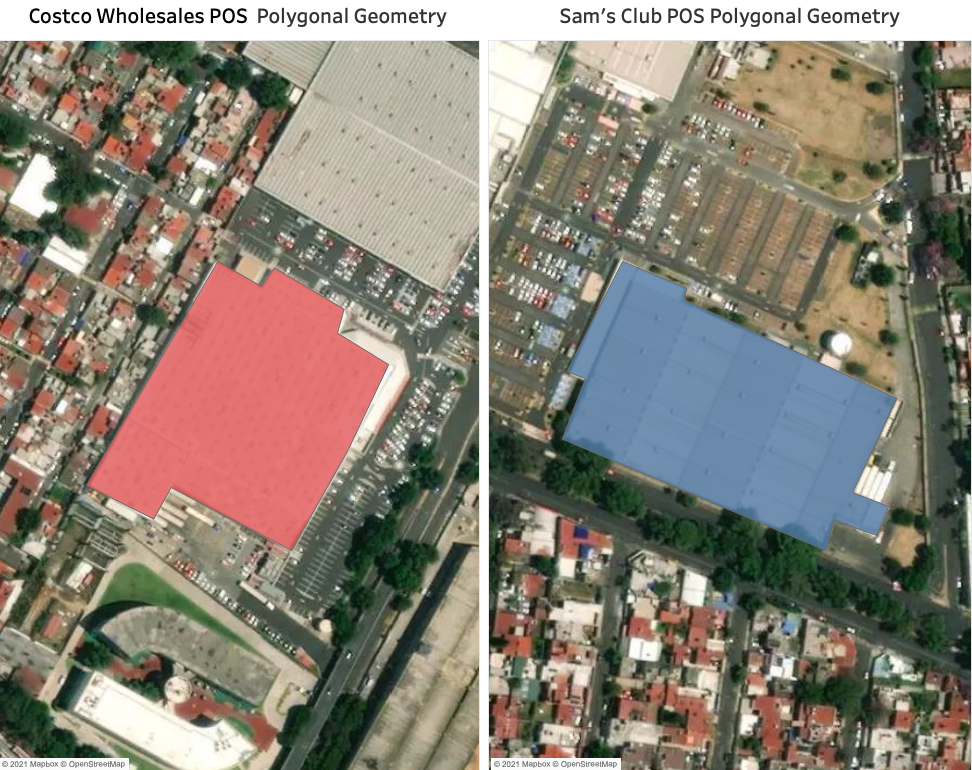
Through location intelligence, the points of interest are located, then a heatmap visualization based on a mobility analysis is applied, letting us observe the internal distribution, the dispersion of consumer mobility, and the distribution of visits within both warehouse clubs.
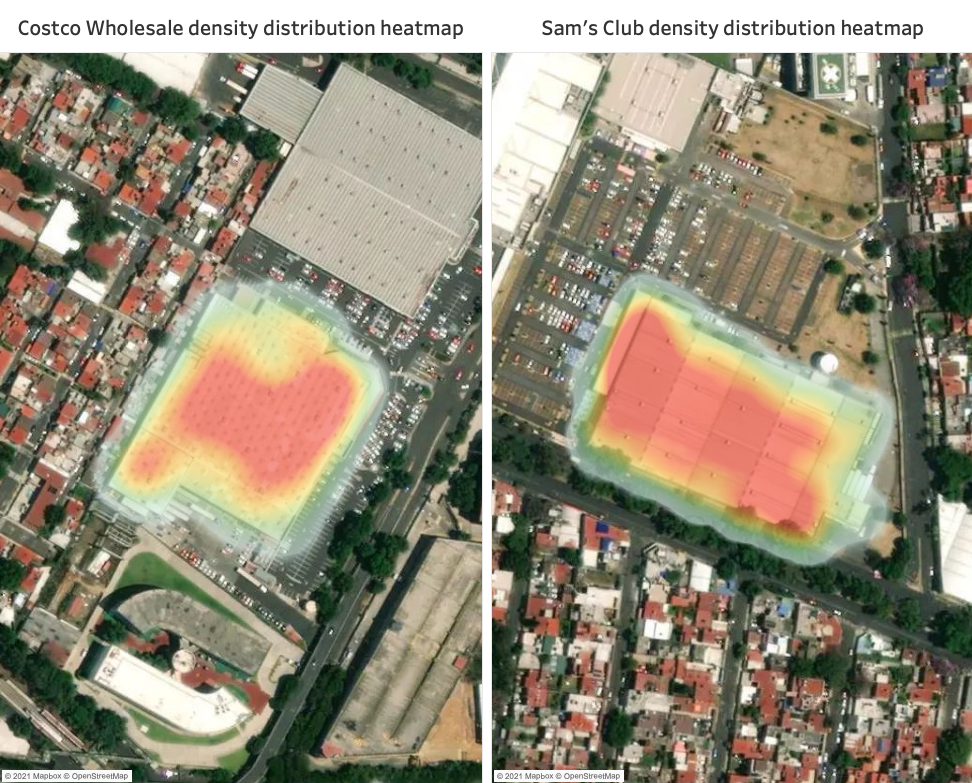
This provides very useful insights when conceptualizing the design of the infrastructure and internal architectural plans that make up each warehouse so that leaders can implement strategies that improve the customer journey and enhance the customer experience with the most efficient expansion models while maximizing the shopping experience for consumers.
Which of the warehouse clubs is the most visited?
Percentage distribution of visits registered in December 2020:
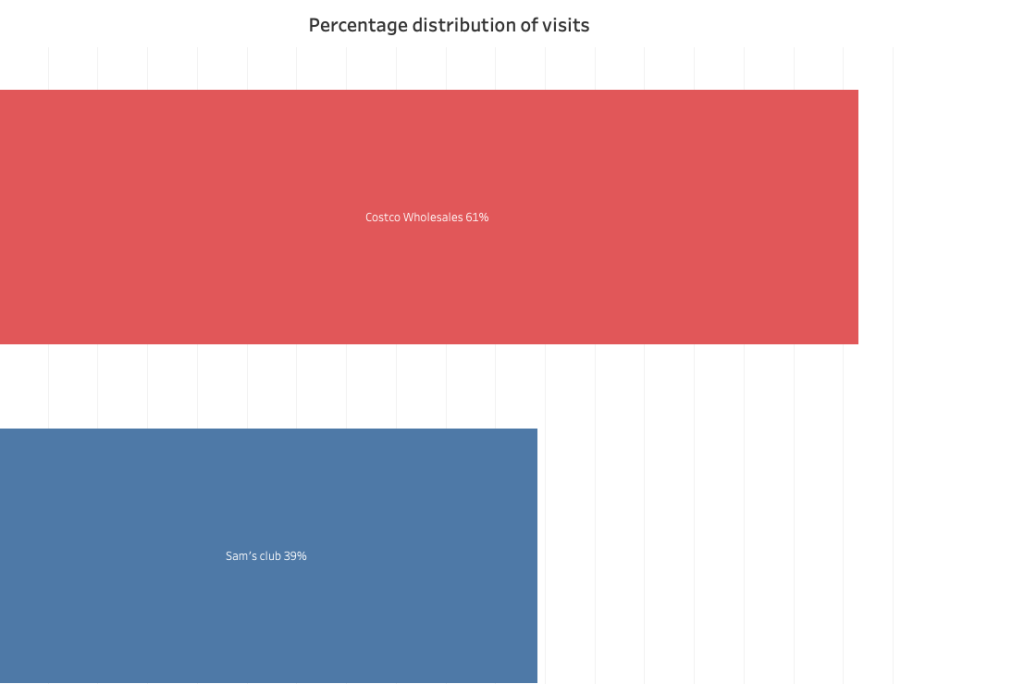
By analyzing the footfall within both warehouses clubs using the established time period, we identified that 61% chose to visit Costco Wholesale, while the remaining 39% preferred Sam’s Club, which correlates with store location and consumer preference when it comes to choosing wholesale products.
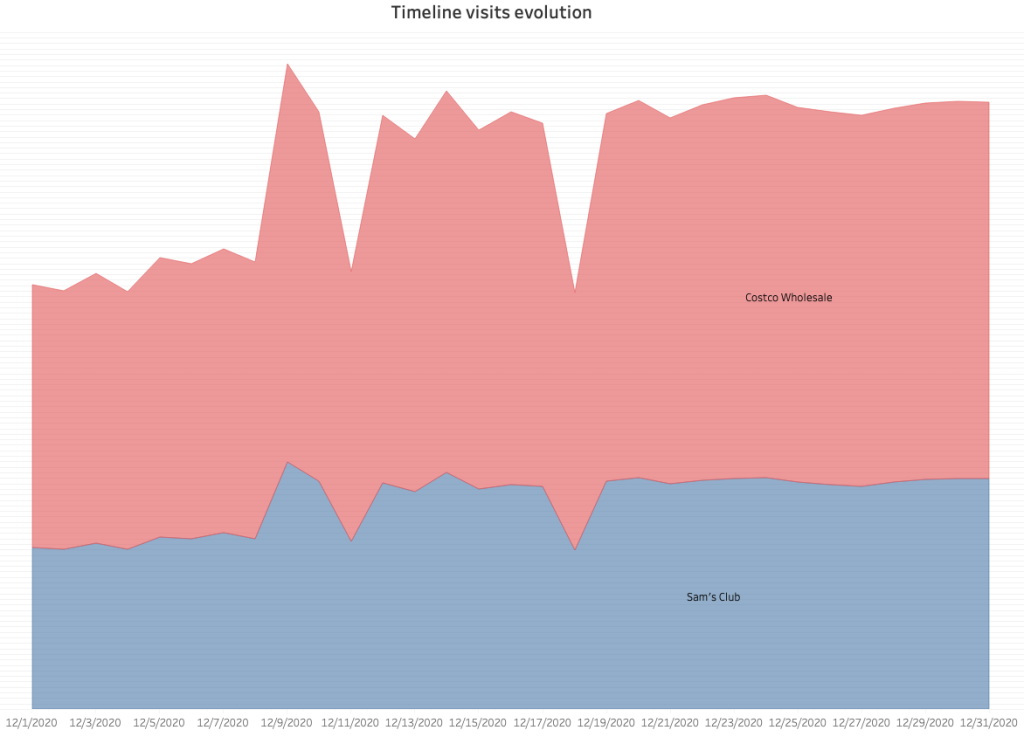
With this analysis, it’s also possible to observe the evolution of visits over time, which can be very useful to identify patterns of foot traffic customer behavior and market trends in peak and off-peak seasons
Identifying customers’ patterns: Which days of the week are the busiest ones?
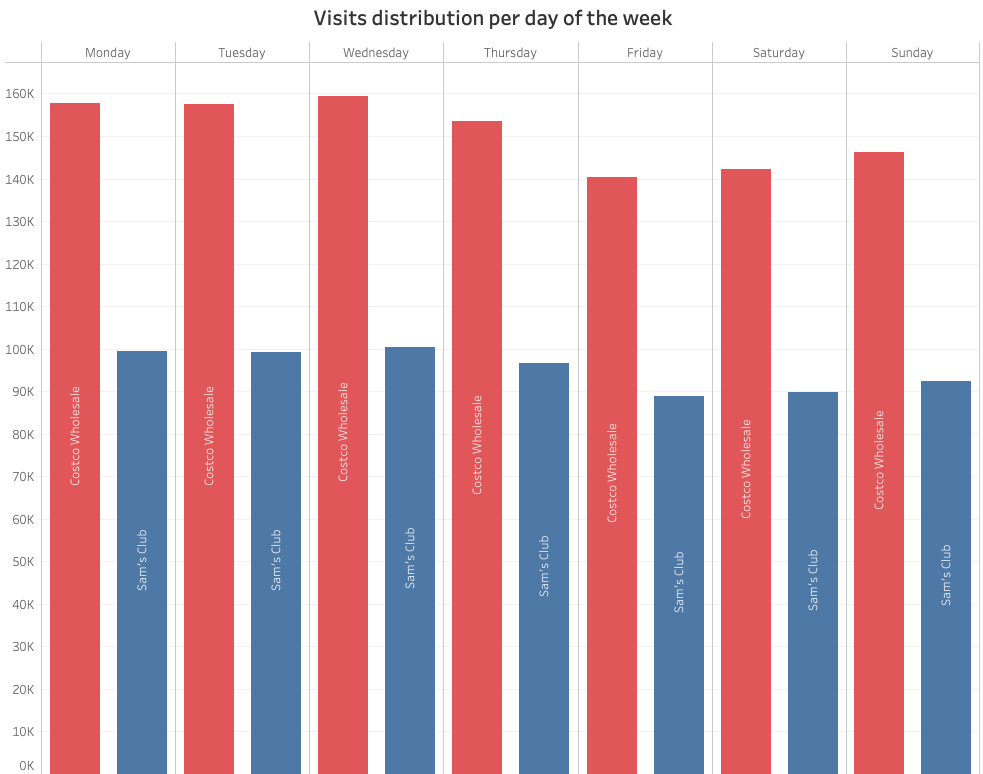
One of the most interesting applications of footfall analytics is that it allows gaining a detailed knowledge of the day, hours, months, or years of consumers’ behavior patterns, offering valuable insights to develop tailor-made marketing campaigns and commercial strategies based on the warehouse’s power hours.
This analysis is very useful to understand the performance during the most active hours of the day.
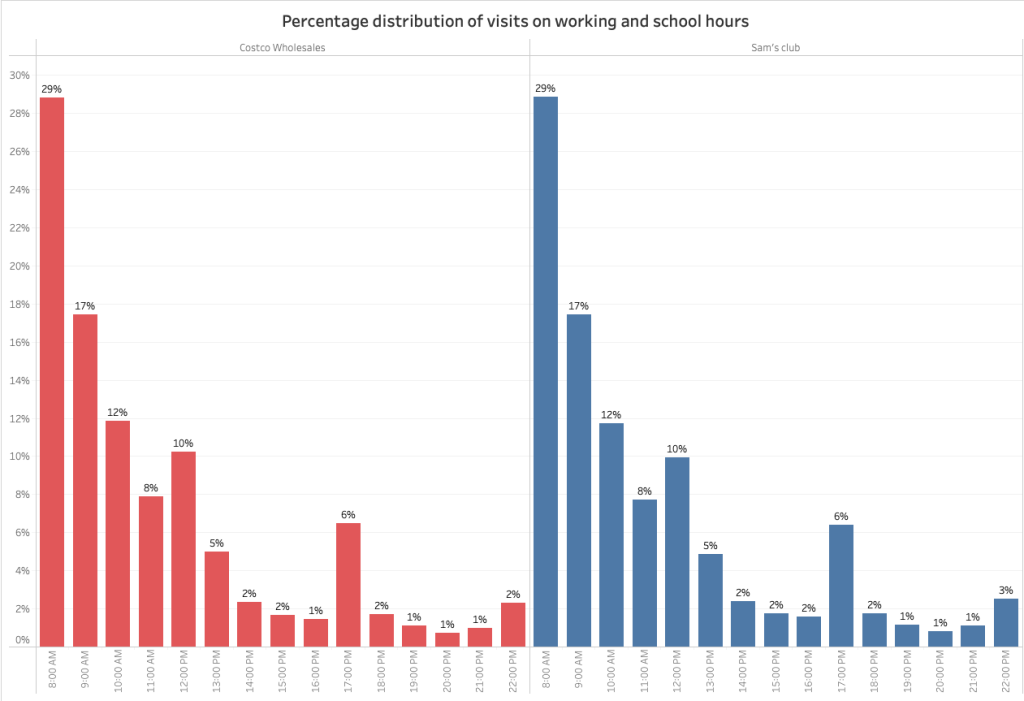
What’s the foot traffic mobility pattern like in the surrounding areas of the warehouse clubs?
Although visitors are linked to a location’s performance, they aren’t the main determinant in its success. The location’s environment is another important factor to consider because it allows you to identify the competition, evaluate its success, estimate the number of visitors, revenues, and business strategies, among other things.
By gathering information about the competition’s potential customers, it’s possible to perform a more detailed benchmarking and generate strategies that can attract the competition’s customers.
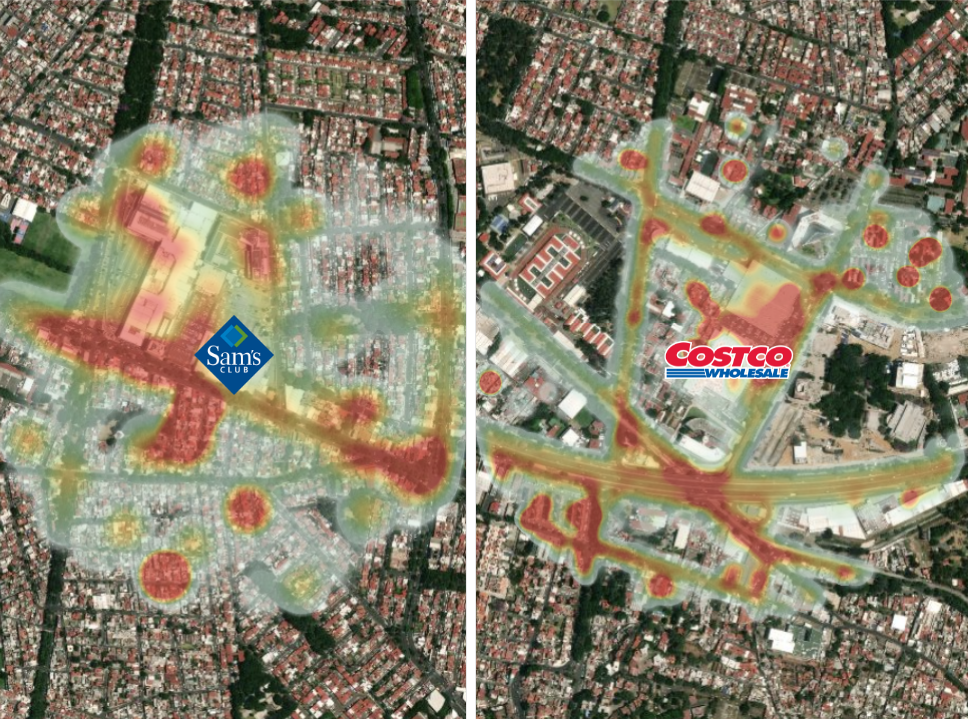
This environmental analysis gives us a more comprehensive picture of people’s travel patterns in the surrounding area. When paired with other indicators, this information provides a wealth of information for estimating retail income.
What other insights can be obtained by applying footfall analytics at a point of sale?
Understand which customers both warehouses club share
By analyzing anonymized and aggregated mobility data over a given period of time at a specific location, such as a warehouse club, it’s possible to estimate the percentage distribution of consumers who visited both shopping centers.
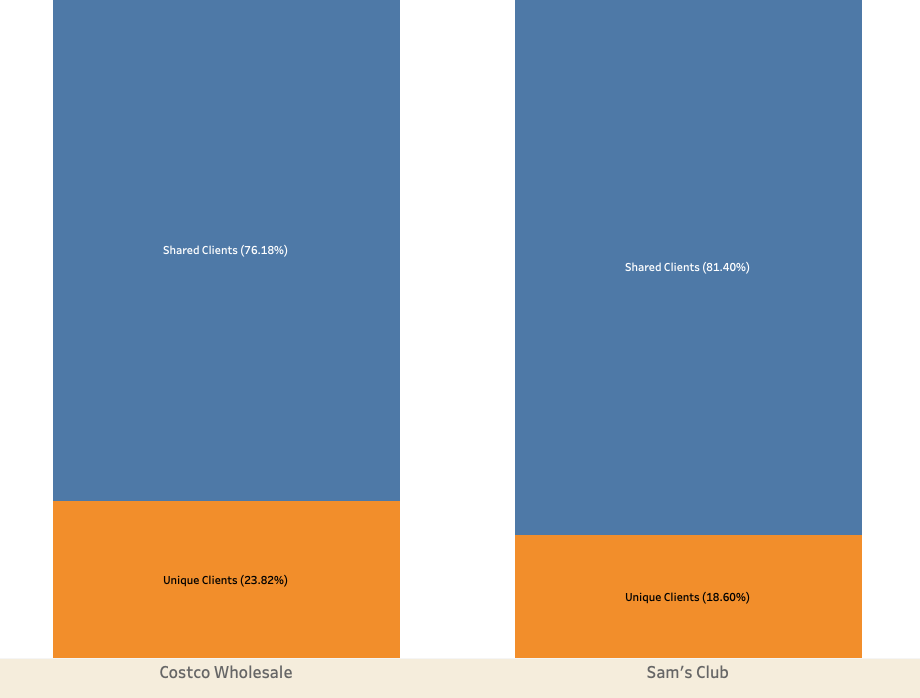
These solutions benefit any type of business, an example of this is another case study that was conducted to compare two of the most popular supermarkets in the city of Phoenix, Arizona, USA, the findings were more than interesting. Read more about this case: “Visits battle: Whole Foods Market vs. Sprouts Farmers Market“
Customer Analytics
With mobility data, it’s possible to see how people move through a specific area behave, how they’re similar, their interests, preferences, socioeconomic status, and real wealth. In choosing the ideal locations for new store openings, an in-depth research of the commercial businesses in the region in question becomes critical.
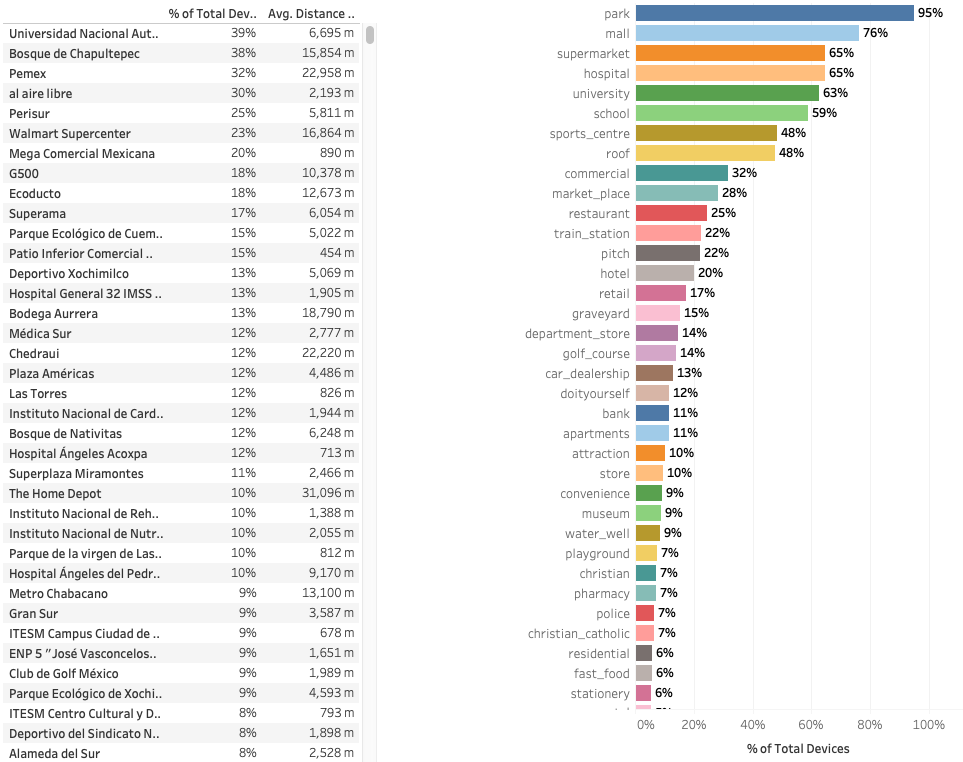
Identifying ideal areas in expansion and site selection strategies
With mobility data, it’s possible to clearly understand the behavior of the people who pass through a given area, how they’re alike, their tastes, preferences, socioeconomic level, and purchasing potential. Including an in-depth analysis of the commercial establishments in the area in question, becomes a crucial factor in determining the best locations for the opening of new stores.
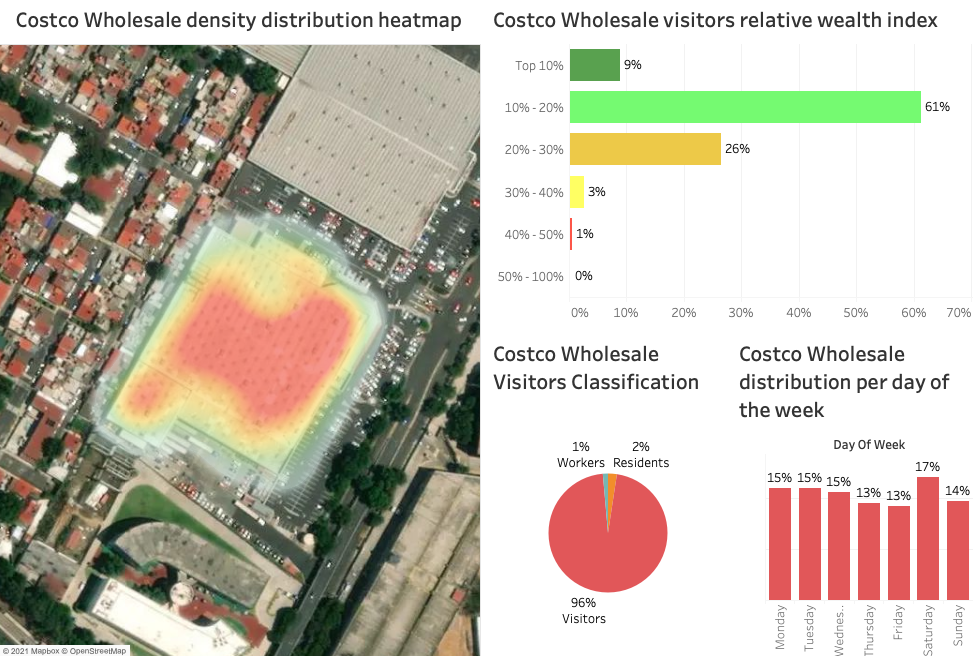
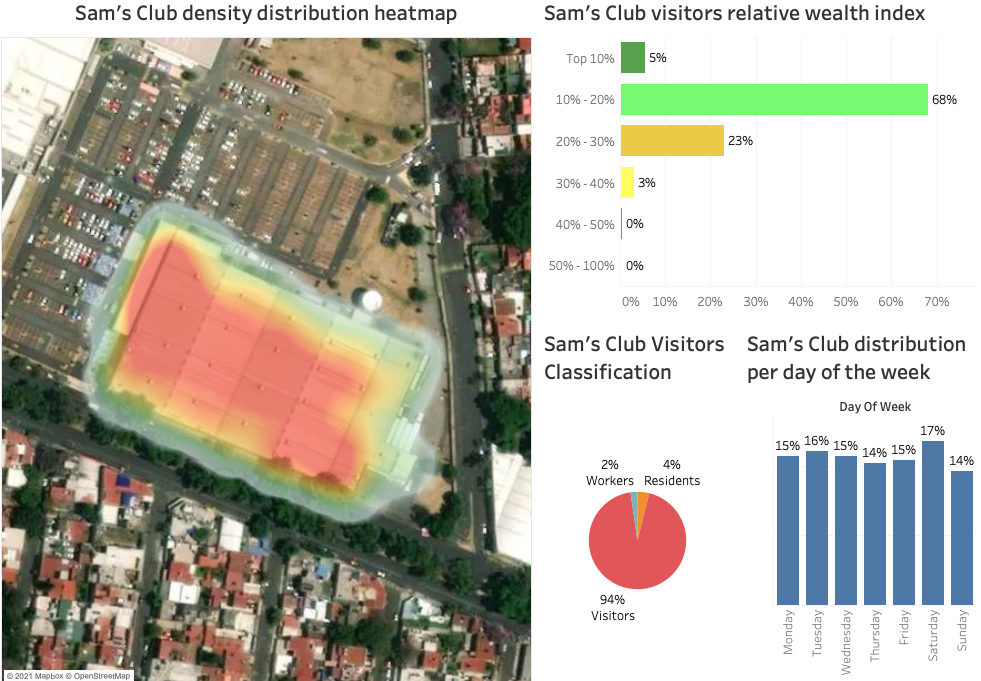
What is the revenue potential of my competitor?
Through machine learning models, it’s possible to predict the revenue and visits of a competitors´ store. With these models, Costco Wholesale could get to estimate the revenue of its competitor Sam’s Club in a specific week, month, or year. These models can also be used, for instance, to predict the potential success of an outlet that is about to open. This is ideal to complement feasibility studies for new stores in expansion plans.
All these insights are generated by applying location intelligence and mobility analysis, if you are interested in knowing more about these insights, we conducted a POI characterization case study of Zona Rosa in Mexico City.
[button button_text=”Like what you see? Request a free DEMO” button_style=”style-1″ button_arrow=”true” button_rounded=”true” font=”Default” button_size=”medium” font_size=”” button_icon=”” button_align=”center” padding_v=”” padding_h=”” button_link=”/request_demo/” link_open=”_self” href_title=”” id=”” class=”” bg_color=”” text_color=”” border_size=”” border_color=”” border_radius=”” h_bg_color=”” h_text_color=”” h_border_size=”” h_border_color=”” h_border_radius=”” margin_top=”” margin_bottom=”” margin_left=”” margin_right=””]

